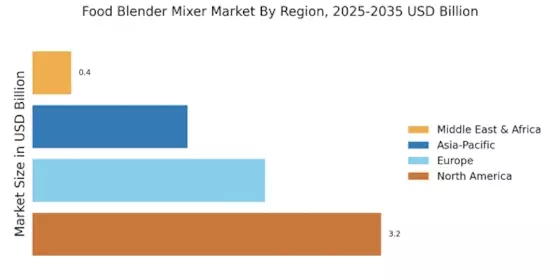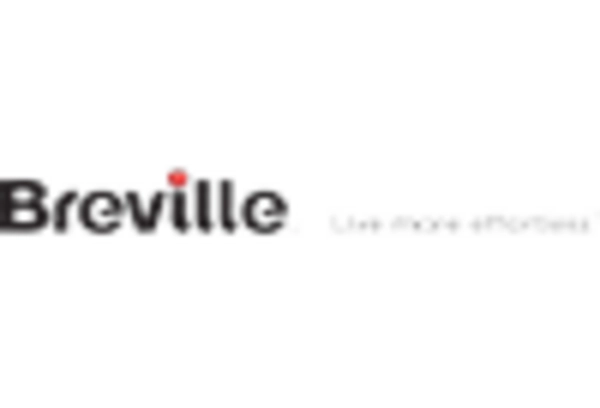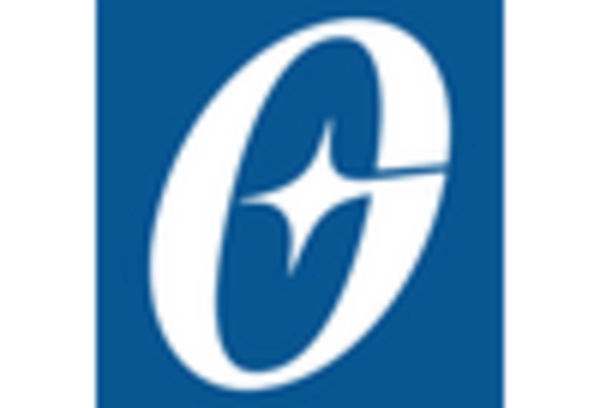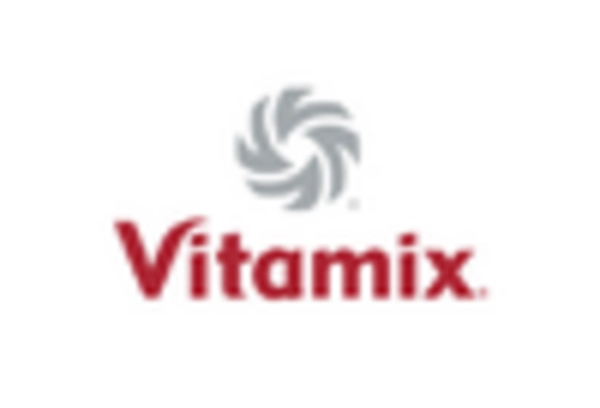Increased Health Consciousness
The Food Blender Mixer Market is significantly influenced by the rising health consciousness among consumers. As individuals become more aware of the importance of nutrition, there is a growing preference for homemade meals and beverages. This shift is leading to an increased demand for blenders and mixers that facilitate the preparation of healthy smoothies, soups, and sauces. Market data indicates that the health and wellness food segment is expected to expand at a rate of 5% annually, further propelling the Food Blender Mixer Market. Consumers are seeking appliances that not only blend but also preserve the nutritional value of ingredients. Consequently, manufacturers are focusing on developing high-performance blenders that cater to this health-oriented consumer base.
Rising Demand for Convenience Foods
The Food Blender Mixer Market is experiencing a notable surge in demand for convenience foods. As lifestyles become increasingly fast-paced, consumers are gravitating towards products that simplify meal preparation. This trend is reflected in the growing popularity of ready-to-eat meals and smoothies, which often require blending. According to recent data, the convenience food sector is projected to grow at a compound annual growth rate of approximately 4.5% over the next five years. This growth is likely to drive the demand for food blenders and mixers, as they are essential tools for creating these convenient meal options. Manufacturers in the Food Blender Mixer Market are responding by innovating their product lines to cater to this demand, offering features that enhance usability and efficiency.
Growth of E-Commerce and Online Retail
The Food Blender Mixer Market is benefiting from the rapid growth of e-commerce and online retail platforms. As consumers increasingly turn to online shopping for convenience, the availability of food blenders and mixers through these channels is expanding. Recent statistics reveal that online sales of kitchen appliances are projected to grow by 8% annually, significantly impacting the Food Blender Mixer Market. This trend is encouraging manufacturers to enhance their online presence and invest in digital marketing strategies to reach a broader audience. Additionally, the rise of social media and influencer marketing is further driving consumer interest in these products. As a result, the Food Blender Mixer Market is likely to see a shift in purchasing behaviors, with more consumers opting for online purchases.
Technological Innovations in Appliances
Technological advancements are playing a pivotal role in shaping the Food Blender Mixer Market. The introduction of smart blenders equipped with features such as touch screens, programmable settings, and connectivity options is transforming consumer experiences. These innovations allow users to customize blending processes, enhancing convenience and efficiency. Recent market analysis suggests that the smart kitchen appliance segment, which includes advanced blenders, is projected to grow by 7% over the next few years. This trend indicates a shift towards more sophisticated kitchen tools that align with modern cooking practices. As technology continues to evolve, the Food Blender Mixer Market is likely to see an influx of products that integrate artificial intelligence and automation, appealing to tech-savvy consumers.
Sustainability and Eco-Friendly Products
Sustainability is becoming a crucial consideration in the Food Blender Mixer Market. As consumers increasingly prioritize eco-friendly products, manufacturers are responding by developing blenders and mixers made from sustainable materials. This trend is not only about the materials used but also encompasses energy-efficient appliances that reduce environmental impact. Industry expert's indicates that the demand for eco-friendly kitchen appliances is expected to rise by 6% annually. This shift towards sustainability is prompting brands to innovate and market their products as environmentally responsible, which resonates with a growing segment of eco-conscious consumers. The Food Blender Mixer Market is thus likely to witness a transformation as companies adopt sustainable practices in their production processes.


















Leave a Comment